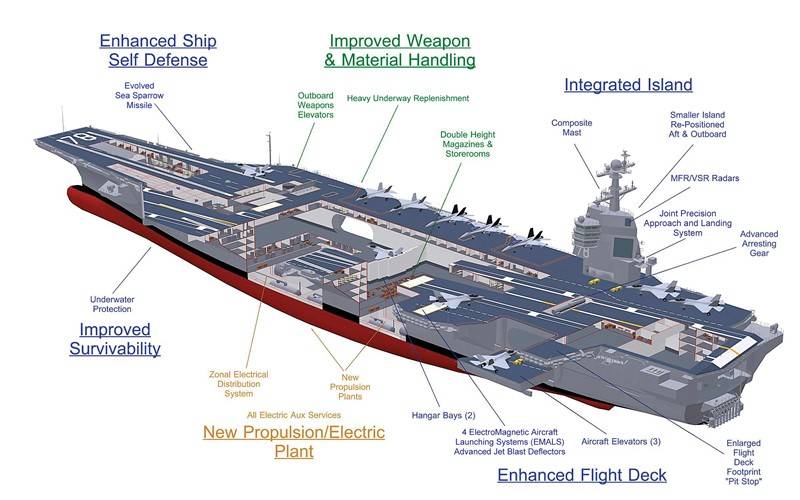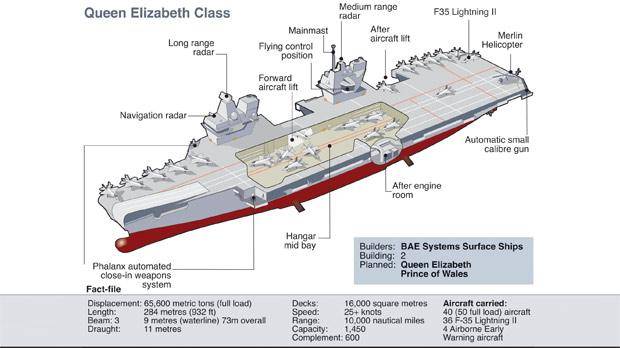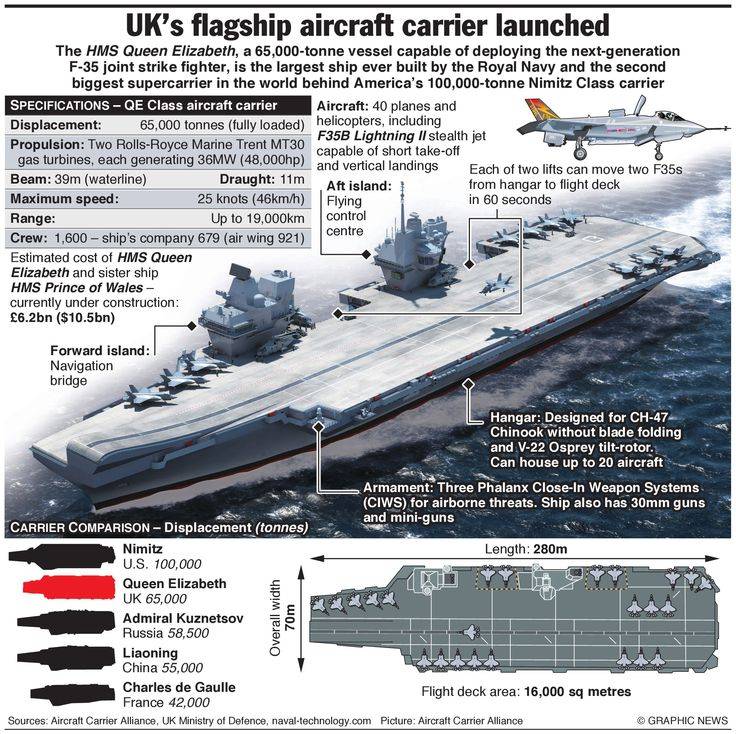Military Education
by xdtxegvfbWarships
Here you can check your skill.

Nimitz Class Aircraft Carrier

The Nimitz Class aircraft carriers are the largest warships ever built. With over 6,000 personnel (crew and aircrew), the carrier has a displacement of 102,000t, and a flight deck length of 332.9m. All nine nuclear-powered Nimitz Class carriers have been built by Newport News Shipbuilding (now Northrop Grumman Ship Systems), based in Virginia. Tasked with a multi-mission attack / ASW role, the first of class, USS Nimitz, was commissioned in 1975. The last of the class, USS George HW Bush (CVN 77), was commissioned in January 2009.
Nimitz class aircraft carrier design
The more recent Nimitz Class carriers (CVN72-CVN76) have a displacement of 102,000t when fully loaded. They have a length of 317m and beam of 40.8m. The carrier reaches a maximum speed of over 30kt, and accommodates a complement of 3,184 personnel (with 203 officers); 2,800 aircrew (with 366 officers); and 70 flag (with 25 officers).
Aircraft
The 50 TACAIR air wing includes up to 82 aircraft. Typically this would be: 12 F/A-18E/F Hornets, 36 F/A-18 Hornets, four E-2C Hawkeyes, and four EA-6B Prowlers fixed-wing; and the following helicopters: four SH-60F and two HH-60H Seahawks. The carrier can also deploy S-3B Viking aircraft, but these are being phased out and replaced with the F/A-18E/F Super Hornet. The S-3B Viking was finally decommissioned in January 2009. The last operational deployment of the F-14, deployed on US carriers since 1972, was in March 2006. The F-14 was decommissioned in September 2006. Air wings can be varied according to the nature of the operation: for example, in 1994, 50 army helicopters replaced the usual air wing on the USS Dwight D Eisenhower during operations off Haiti. The flight deck measures 333m x 77m and is equipped with four lifts, four steam-driven catapults and four arrester wires. The carrier is capable of launching one aircraft every 20 seconds. In April 2005, the US Naval air systems command (NAVAIR) selected General Atomics Electromagnetic Systems for the system development and demonstration (SDD) phase of the advanced arresting gear (AAG) programme, to provide a new arrestor system for USN carriers.
Missiles
The more recently built carriers are armed with three Raytheon GMLS mk29 eight-cell launchers for Nato Sea Sparrow surface-to-air missiles. Sea Sparrow has a range of 14.5km and semi-active radar terminal guidance. The carriers are also fitted with the Raytheon RAM (rolling airframe missile) system, which provides short-range defence against incoming anti-ship missiles including sea-skimming missiles. USS Stennis was fitted with RAM in 2005 and began firing trials of the system in June 2006. One Sea Sparrow mount and one Phalanx CIWS mount were removed to fit the RAM. USS John C Stennis was the first carrier to fire the evolved Sea Sparrow missile (ESSM) in October 2008.
Guns
There are four Raytheon / General Dynamics 20mm Phalanx six-barrelled Mk 15 close-in weapon systems which have a firing rate of 3,000 rounds/min and a range of 1.5km.
Countermeasures
Decoys include four Sippican SRBOC (super rapid bloom off-board chaff) six-barrelled mk36 decoy launchers, which deploy infrared flares and chaff, SSTDS torpedo defence system and AN/SLQ-25 Nixie torpedo countermeasures system, from Argon ST of Fairfax, Virginia. The Raytheon AN/SLQ-32(V) electronic warfare system detects hostile radar emissions by two sets of antennae and the system analyses the pulse repetition rate, the scan mode, the scan period, and the frequency. The system identifies the threat and direction, provides a warning signal and interfaces to the ship's countermeasures systems.
Combat systems
The carriers' combat data systems are based around the block 0 or 1 naval tactical and advanced combat direction system (ACDS) with communications links 4A, 11, 14, and 16. Weapons control is managed by three mk91 mod 1 MFCS directors for the Sea Sparrow missile. USS Nimitz, USS Ronald Reagan and USS John Stennis have been fitted with the SSDS mk2 mod 0 ship self-defence system, developed by Raytheon. The SSDS will provide automated self-defence against anti-ship cruise missiles (ASCMs) by integrating and coordinating the ship's weapon and electronic warfare systems. USS Nimitz has also been fitted with the Lockheed Martin TIS (tactical input segment) digital reconnaissance processing system, which can receive real-time imagery from airborne sensors.
Sensors
Air search radars include the ITT SPS-48E 3-D, operating at E/F-band; Raytheon SPS49(V)5, C/D-band; and Raytheon mk23 TAS, D-band. Surface search radar is the Northrop Grumman Norden Systems SPS-67V, operating at G-band.

Big Nimitz here!
And also here!
About new Ford-class carriers
HMS Queen Elizabeth aircraft carrier

General characteristics
The ships' company is 679 rising to 1,600 with air element added. A more recent parliamentary reply stated the average crew size will be 672. They will have a displacement of 65,000 tonnes on delivery, but the design allows for this to reach over 70,000 tonnes as the ship is upgraded through its lifetime. They have an overall length of 280 metres (920 ft), a width at deck level of 70 metres (230 ft), a height of 56 metres (184 ft), a draught of 11 metres (36 ft) and a range of 10,000 nautical miles (12,000 mi; 19,000 km).[44] The Ministry of Defence decided not to use nuclear propulsion due to its high cost, so power is supplied by two Rolls-Royce Marine Trent MT30 36 MW (48,000 hp) gas turbine generator units and four Wärtsilä diesel generator sets (two 9 MW or 12,000 hp and two 11 MW or 15,000 hp sets). The Trents and diesels are the largest ever supplied to the Royal Navy, and together they feed the low-voltage electrical systems as well as four GE Power Conversion's 20 MW Advanced Induction Motor (arranged in tandem) electric propulsion motors that drive the twin fixed-pitch propellers.

Queen Elizabeth aircraft carrier engines, power, propulsion
The list of all engines and propulsion systems to be installed on the two new UK aircraft carriers QE-class includes:
- CODLAG (combined Diesel-Electric and Gas Turbine propulsion)
- two 36MW Rolls Royce turbines
- two “Wartsila 16V38” diesels (with 11,6MW generators), and two “Wartsila 12V38” diesels (with 8,7MW generators) – both models with a turbocharger at driving end
- one “Wartsila 12V200” (“Wartsila 200”) 2MW emergency diesel generator set
- two propeller shafts (each with two Alstom 15-phase electric motors (150 rpm), 80MW total power consumption, output – 95,000 SHP.
QE Armament
- Phalanx CIWS (a automated Close-In Weapon System, against anti-aircraft/anti-ship missiles), 6 barrels (caliber 20x102mm), fire rate 4,500 rounds/min (75 rounds/sec). 30mm automated guns + miniguns for asymmetric threats.
- HMWHS (“Highly Mechanised Weapon Handling System”), about 6 times faster than any previous RN aircraft carrier, operated with only 50 people (could be operated with as few as 12), this system will move munitions on pallets by remotely controlled electric vehicles/lifts.
UK future aircraft carrier QE-class technology
- The BAE Systems Insyte Artisan 3D Radar is the most sophisticated in the RN’s fleet (appr 5 times more efficient than any currently in service, range between 200m/656ft and 200km/124ml, its antenna weighs only about 700kg). It can identify a tennis ball sized target traveling at over 2000mph/3220kmh at distance greater than 16ml/26km away. It can track more than 900 targets simultaneously. It can operate in densely signal-populated environment and cut through interference equivalent of 10000 GSM signals directed its way.
- Lower Block 02 is 66ft (20m) high and 230ft (70m) long. All the largest sections are built in Portsmouth.
- QE 3 ship’s 2 propellers weighs 33t each (it’s 2 1/2 times heavier than a double-decker bus), 2 rudders will be used for steering.
- HMS QE has 2 anchors, each is 3,1 m (10,2 ft) high and weighing 13 t.
- Flight deck is 919 ft (280 m) long and 243 ft (74 m) wide.
- R08-class ship comparison to the old designs: 2 islands on the flight deck rather than just 1 (1 forward for the ship’s navigation control/bridge and 1 aft for air-traffic control/flight operations), 2 heavy lifts to the ship’s side (to bring aircraft up from the hangar, while the older carriers had their lifts placed in the middle of the flight deck), a HMWHS (see armament below) to select and deliver ammunition from the 2 large magazines to aircraft in the hangar (saving on crew numbers).

Full-screen Elizabeth here
Other aircraft carriers





